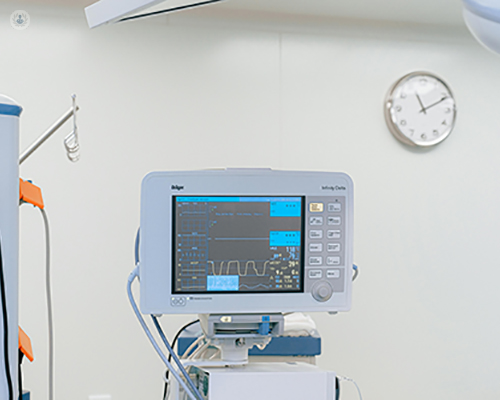Understanding pneumothorax: Causes, symptoms, and treatment
Escrito por:Repairing a collapsed lung often involves thoracoscopy, a minimally invasive procedure with small incisions, a miniature camera (endoscope), and surgical instruments. In his latest online article, Mr Marco Scarci explores the causes, symptoms, and treatment options for pneumothorax.

What is the primary cause of pneumothorax?
Pneumothorax is frequently a result of a puncture or tear in the lung tissue, typically caused by chest trauma. Other contributing factors may include medical procedures like thoracentesis (removing excess fluid from the pleural cavity) or mechanical ventilation. Underlying medical conditions such as chronic obstructive pulmonary disease (COPD), cystic fibrosis, or lung cancer can also elevate the risk of pneumothorax.
In some cases, pinpointing the cause of pneumothorax is challenging, particularly in young, tall, and slender individuals, which is termed idiopathic pneumothorax.
What are the three indicators of a pneumothorax?
- Sudden and intense chest pain on one side that may exacerbate with deep breathing or coughing.
- Shortness of breath that may intensify as the pneumothorax advances.
- Elevated heart rate and low blood pressure if the pneumothorax is sizable enough to compress the heart or major blood vessels.
How severe is a pneumothorax?
Pneumothorax, also known as a collapsed lung, can be a serious condition depending on its extent and underlying cause. It occurs when air infiltrates the space between the lung and chest wall, leading to lung collapse.
If left untreated or in the presence of a large pneumothorax, it can result in significant breathing difficulties, chest pain, and potentially death. However, a minor pneumothorax may be asymptomatic and could resolve on its own.
Treatment options vary based on pneumothorax size and underlying causes and may include observation, oxygen therapy, needle aspiration, or chest tube insertion. Seeking medical attention is crucial if pneumothorax is suspected or if troubling symptoms arise.
How is pneumothorax treated?
The treatment for pneumothorax depends on its severity and whether it is primary or secondary.
For primary pneumothorax (without underlying lung disease), treatment may involve:
- Observation if the pneumothorax is small and asymptomatic.
- Oxygen therapy to facilitate reabsorption of trapped air in the lung tissue.
- Aspiration, where a needle is used to remove trapped air.
- Chest tube insertion, involving a flexible tube placed in the pleural space to evacuate air and allow lung re-expansion.
For secondary pneumothorax (resulting from lung disease), treatment may encompass:
- Diagnosis and treatment of the underlying condition (e.g., pneumonia, COPD, lung cancer).
- Oxygen therapy.
- Chest tube insertion
- Surgery, if necessary, to prevent recurrent pneumothorax episodes.
Immediate medical attention is essential if pneumothorax is suspected, as it can be life-threatening if untreated.
Does pneumothorax occur suddenly?
In numerous cases, pneumothorax can manifest suddenly without prior warning signs or symptoms. Common indicators include abrupt chest pain worsening with breathing or coughing, shortness of breath, rapid heart rate, or a sensation of chest tightness. If there is suspicion of pneumothorax or any other medical emergency, seeking immediate medical attention is imperative.
Mr Marco Scarci is an esteemed consultant thoracic surgeon with over 20 years of experience. You can schedule an appointment with Mr Scarci on his Top Doctors profile.


